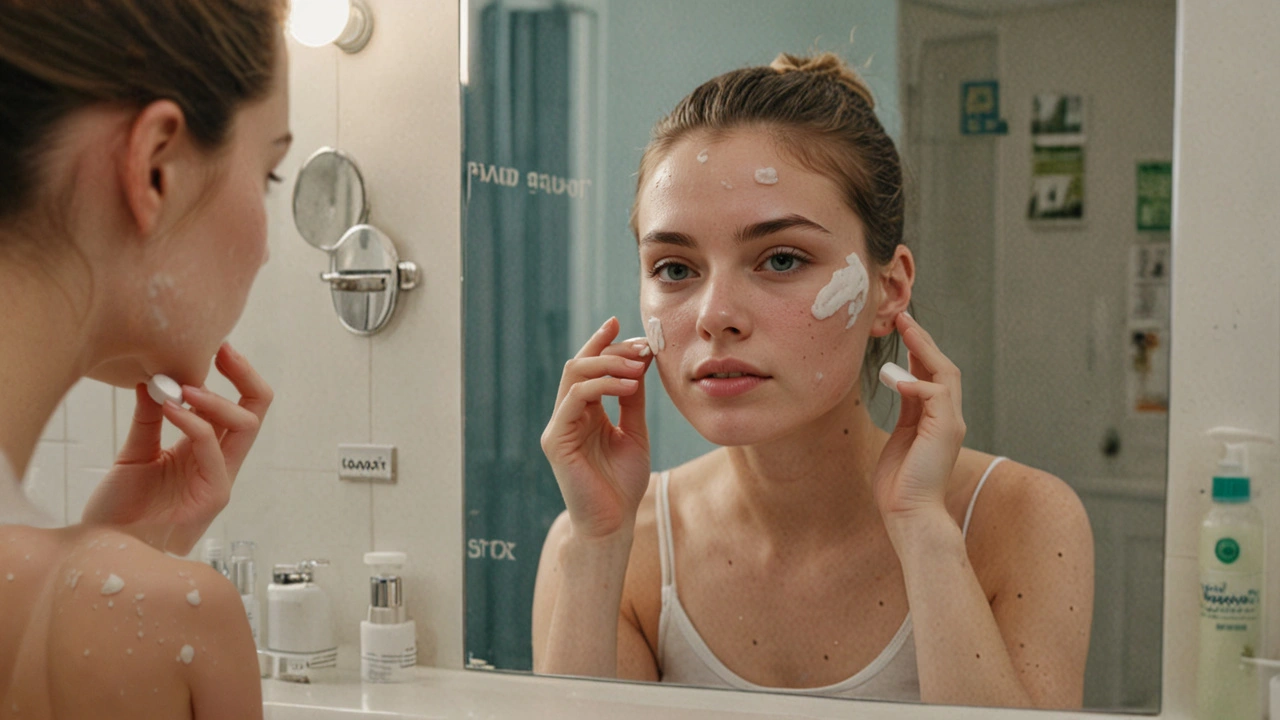If you’ve tried countless creams for breakouts, you’ve probably seen the name benzoyl peroxide on a tube or gel. It’s one of the few over‑the‑counter ingredients that actually works on acne, and it’s backed by decades of research. In simple terms, benzoyl peroxide kills the bacteria that cause pimples, helps clear clogged pores, and reduces inflammation.
Because it’s a strong oxidizing agent, you might wonder if it’s safe for everyday use. The short answer: yes, as long as you follow a few basic rules. Most people start with a low concentration (2‑5%) and increase only if their skin tolerates it well. Higher strengths like 10% are usually reserved for stubborn cases and can cause more irritation.
The magic behind benzoyl peroxide lies in its ability to release oxygen into the pores. Acne‑causing bacteria (Propionibacterium acnes) can’t survive in an oxygen‑rich environment, so they die off quickly. At the same time, the ingredient gently exfoliates dead skin cells that would otherwise block pores.
Another benefit is that benzoyl peroxide doesn’t typically lead to antibiotic resistance—something that’s a big concern with prescription antibiotics. This makes it a reliable first‑line option for many dermatologists and shoppers alike.
1. Start slow. Apply a thin layer once a day, preferably at night, to give your skin time to adjust. If you notice redness or peeling after a few days, cut back to every other night.
2. Moisturize. Benzoyl peroxide can dry out the skin, so follow up with a non‑comedogenic moisturizer. Look for products that list “oil‑free” or “lightweight” on the label.
3. Avoid sun overexposure. The ingredient makes your skin more photosensitive. Use sunscreen with at least SPF 30 daily, even if you stay indoors most of the day.
4. Don’t mix with certain actives. Using benzoyl peroxide together with retinoids or strong acids (like salicylic acid) can increase irritation. Space them out—one in the morning, the other at night—or use on alternate days.
5. Watch for staining. Benzoyl peroxide can bleach fabrics and hair. Let it fully absorb before going to bed, and protect pillowcases with old towels if you’re a heavy sleeper.
If irritation persists after two weeks, consider dropping the product or switching to a lower concentration. Most people see noticeable improvement in 4‑6 weeks, but patience is key—skipping applications won’t speed up results.
In summary, benzoyl peroxide is a proven acne fighter that works by killing bacteria and clearing pores. Use it sparingly, protect your skin from the sun, keep it moisturized, and you’ll likely see clearer skin without major side effects.
